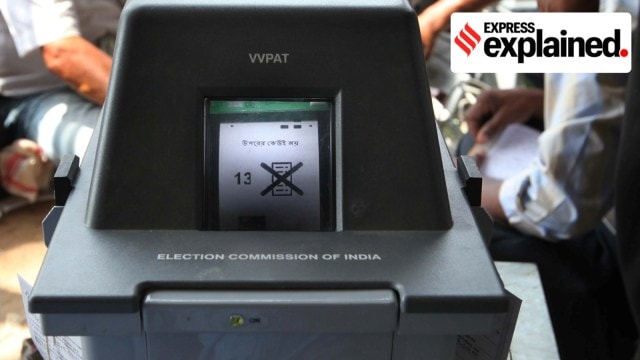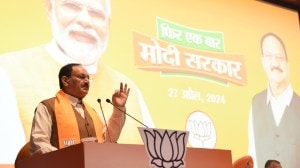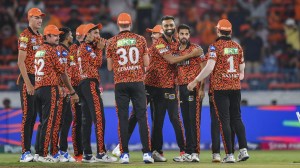- India
- International
Supreme Court VVPAT judgment: What has changed — and not changed?
While the apex court’s judgment does not change anything for voters, candidates will be allowed to seek verification of 5% EVMs post polls
 VVPAT (Voter Verified Paper Audit Trail) machines checked and carried at Purulia Polytechnique College. (Express Photo by Partha Paul/File)
VVPAT (Voter Verified Paper Audit Trail) machines checked and carried at Purulia Polytechnique College. (Express Photo by Partha Paul/File)The Supreme Court on Friday (April 26) rejected a plea for 100% verification of Voter Verifiable Paper Audit Trail (VVPAT) slips with the Electronic Voting Machine (EVM) count.
“There are three pleas taken — that we should return to the paper ballot system, that the printed slips on the VVPAT machine should be given to voters to verify and put in the ballot box for counting, and there should be 100% counting of VVPAT slips in addition to electronic counting…We have rejected all of them after referring to the protocol in place, technical aspects and data which is on record,” the Bench comprising Justices Sanjiv Khanna and Dipankar Datta said.
That being said, the apex court did order certain specific changes to be made. We explain what has changed — and what has not.
What remains unchanged
For the voter, the SC judgment has brought in absolutely no change. Voting will continue to take place using EVMs, with 100% of the machines attached to a VVPAT unit.
Moreover, as per the existing provisions, VVPAT slips of five randomly selected Assembly constituencies or segments would be counted to verify with the count of the EVMs. The petitioner, the Association for Democratic Reforms, had sought 100% counting of VVPAT slips.

What has changed
While not much has changed for the Election Commission (EC) in terms of how it organises polling, the apex court directed the EC to adopt some new procedures post-polls.
In a first, the court gave directions to the EC to seal and store the symbol loading units (SLUs) for 45 days after declaration of results. SLUs are memory units that are first connected to a computer to load election symbols onto it, and then used to enter symbols of the candidates on the VVPAT machines. These SLUs are to be opened, examined and dealt with in the same way as EVMs.
According to EC sources, one to two SLUs are used to load symbols onto VVPATs per Assembly constituency. These will now be stored for 45 days in case there are any election petitions regarding them, sources said.
Moreover, the SC has enabled candidates to seek verification of the EVMs — again a first. Candidates coming second or third can ask for a verification of the burnt memory semicontrollers in 5% of EVMs per Assembly segment of each Parliamentary constituency. This verification will be done after a written request is made by the candidate and would be carried out by a team of engineers of the EVM manufacturers.
According to the judgment, candidates or representatives can identify EVMs by the polling station or serial number. The request for verification has to be made within seven days of the declaration of results, and candidates will have to bear the expenses, which would be refunded in case the EVM is found to be tampered with, the court said.
Other suggestion made by SC
Apart from these two directions, the court said that the EC may “examine” the suggestion that VVPAT slips can be counted using a counting machine, rather than by humans. VVPAT slips could have a barcode printed on them, making it easier for machine counting, it was suggested during the hearing.
The court said since this was a technical aspect that would require evaluation, it had refrained from commenting either way.
More Explained
EXPRESS OPINION
May 08: Latest News
- 01
- 02
- 03
- 04
- 05
































